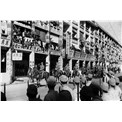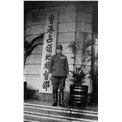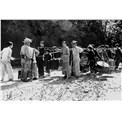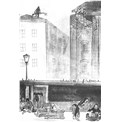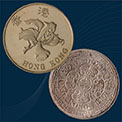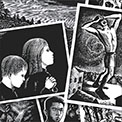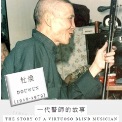-
History & Society
- Education in Pre-war Hong Kong
- History of Taikoo Sugar Refinery
- Hong Kong Products Exhibition
- Local Festivals Around the Year
- Post-war Industries
- Pre-war Industry
- The Hong Kong Jockey Club Archives
- Tin Hau Festival
- Memories We Share: Hong Kong in the 1960s and 1970s
- History in Miniature: The 150th Anniversary of Stamp Issuance in Hong Kong
- A Partnership with the People: KAAA and Post-war Agricultural Hong Kong
- The Oral Legacies (I) - Intangible Cultural Heritage of Hong Kong
- Hong Kong Currency
- Hong Kong, Benevolent City: Tung Wah and the Growth of Chinese Communities
- The Oral Legacies Series II: the Representative List of the Intangible Cultural Heritage of Hong Kong
- Braving the Storm: Hong Kong under Japanese Occupation
- A Century of Fashion: Hong Kong Cheongsam Story
Geography & EnvironmentArt & Culture- Calendar Posters of Kwan Wai-nung
- Festival of Hong Kong
- Ho Sau: Poetic Photography of Daily Life
- Hong Kong Cemetery
- Sketches by Kong Kai-ming
- The Culture of Bamboo Scaffolding
- The Legend of Silk and Wood: A Hong Kong Qin Story
- Journeys of Leung Ping Kwan
- From Soya Bean Milk To Pu'er Tea
- Applauding Hong Kong Pop Legend: Roman Tam
- 他 FASHION 傳奇 EDDIE LAU 她 IMAGE 百變 劉培基
- A Eulogy of Hong Kong Landscape in Painting: The Art of Huang Bore
- Imprint of the Heart: Artistic Journey of Huang Xinbo
- Porcelain and Painting
- A Voice for the Ages, a Master of his Art – A Tribute to Lam Kar Sing
- Memories of Renowned Lyricist: Richard Lam Chun Keung's Manuscripts
- Seal Carving in Lingnan
- Literary Giant - Jin Yong and Louis Cha
Communication & Media- Hong Kong Historical Postcards
- Shaw Brothers’ Movies
- Transcending Space and Time – Early Cinematic Experience of Hong Kong
- Remembrance of the Avant-Garde: Archival Camera Collection
- Down Memory Lane: Movie Theatres of the Olden Days
- 90 Years of Public Service Broadcasting in Hong Kong
- Multifarious Arrays of Weaponry in Hong Kong Cinema
-
History & SocietyGeography & EnvironmentArt & Culture
-
View Oral History RecordsFeatured StoriesAbout Hong Kong Voices
-
Hong Kong Memory
The Fall of Hong Kong
Japan took full control of Hong Kong on 25 December 1941 and set up the ‘Governor’s Office of the Occupied Territory of Hong Kong’ the following February with Isogai Rensuke as the Governor. Japan saw Hong Kong as a supply line for its army and governed the city high-handedly. Adopting the policy of ‘using Chinese to subdue Chinese’ to govern the territory, it established the ‘Rehabilitation Advisory Committee’, the ‘Chinese Representative Council’ and the ‘Chinese Co-operative Council’ to reinforce its control by sowing division between Hong Kong citizens. The Japanese authorities also implemented a number of harsh military measures: supplies were requisitioned and military banknotes were over-issued, with the result that the local economy stalled and people led lives of utter misery. The Japanese occupation saw a constant shortage of supplies, while food became increasingly scarce. The authorities rationed everyday items and food: to begin with, every person received a mere 6 tael and 4 mace (about 240 grams) of rice every day, but this allocation was later reduced, making a miserable situation even more hopeless for many people. Corpses of people who died of starvation littered the streets.
With resources scarce during the occupation, the Japanese authorities were unable to cope with the huge demand for food and supplies or with growing social problems, and they subsequently founded the Repatriation Committee (later renamed the Repatriation Office) to force Hong Kong residents to return to their hometowns in China; many were also sent to work on the development of Hainan Island. From 1.6 million before the city fell to Japan, the population had plunged to 0.6 million by 1945 when the Japanese forces surrendered.
Photos
Copyright © 2012 Hong Kong Memory. All rights reserved.






